
NBA Jam is a basketball video game developed and published by Midway for arcades in 1993. It is the first entry in the NBA Jam series. The project leader for this game was Mark Turmell.

Killer Instinct is a fighting video game developed by Rare and published by Midway. It was released as an arcade game in the fall of 1994 and, the following year, ported to the Super Nintendo Entertainment System (SNES) and the Game Boy. The game's plot involves an all-powerful corporation organizing a fighting tournament. The story was adapted in a limited comic book series published under the short-lived Acclaim Comics imprint.

Mortal Kombat 3 is a 1995 arcade fighting game developed by Midway Games and first released into arcades in 1995. It is the third main installment in the Mortal Kombat franchise and a sequel to 1993's Mortal Kombat II. As in the previous games, it has a cast of characters that players choose from and guide through a series of battles against other opponents. The game avoids the tournament storyline of its predecessors, as various warriors instead fight against the returning Shao Kahn, who has resurrected his bride Sindel and started an invasion of Earthrealm.

Mortal Kombat Trilogy is a fighting game released by Midway in 1996 as the second and final update to Mortal Kombat 3 for the PlayStation, Nintendo 64, Sega Saturn and PCs. Further versions were also released for the Game.com and R-Zone. It features a similar basic gameplay system and the same story as Ultimate Mortal Kombat 3, but adds characters and stages restored from Mortal Kombat and Mortal Kombat II. New additions to the game included the "Aggressor" bar, and re-introduced Brutality mechanic from 16-bit versions of UMK3. The game was met with positive to mixed reviews upon release. The PlayStation version was released in Japan on April 2, 1998. It was the last Mortal Kombat game to be released in Japan.

Mortal Kombat II is a 1993 arcade fighting game originally produced by Midway for the arcades in 1993. It was later ported to multiple home systems, including MS-DOS, Amiga, Game Boy, Game Gear, Sega Genesis, 32X, Sega Saturn, Super Nintendo Entertainment System, and PlayStation only in Japan, mostly in licensed versions developed by Probe Entertainment and Sculptured Software and published by Acclaim Entertainment.
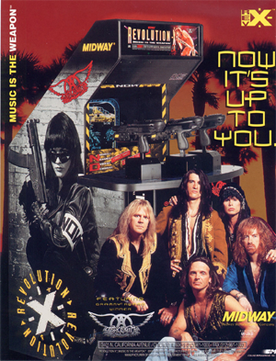
Revolution X is a shooting gallery video game developed by Midway and released in arcades in 1994. The gameplay is similar to Midway's earlier Terminator 2: Judgment Day, but is themed around the band Aerosmith. The oppressive New Order Nation regime and their leader Helga have abducted Aerosmith, and players use a mounted gun to control onscreen crosshairs and shoot enemies. The members of Aerosmith are hidden throughout the game's international locales and must be found in order to receive the game's true ending.
1993 saw many sequels and prequels in video games, such as Dragon Ball Z: Super Butōden, Mortal Kombat II, Secret of Mana, and Super Street Fighter II, along with new titles such as Disney's Aladdin, Doom, FIFA International Soccer, Gunstar Heroes, NBA Jam, Ridge Racer, Samurai Shodown, Star Fox and Virtua Fighter.

Ultimate Mortal Kombat 3 is a fighting game in the Mortal Kombat series, developed and released by Midway to arcades in 1995. It is a standalone update of 1995's earlier Mortal Kombat 3 with an altered gameplay system, additional characters like the returning favorites Kitana and Scorpion who were missing from Mortal Kombat 3, and some new features.
The Videogame Rating Council (V.R.C.) was introduced by Sega of America in 1993 to rate all video games that were released for sale in the United States and Canada on the Sega Master System, Genesis, Game Gear, Sega CD, 32X, and Pico. The rating had to be clearly displayed on the front of the box, but their appearance in advertisements for the video game was strictly optional. It was later supplanted by the industry-wide Entertainment Software Rating Board.

War Gods is a fighting video game originally released to arcades by Midway Games in 1996. Ports for the Nintendo 64, PlayStation and Windows were released in 1997. In the game, players control one of ten fighters who have been given great power by a mysterious ore that crashed-landed on Earth from outer space. The object of the game is to defeat all the other fighters to become the most powerful warrior on the planet.
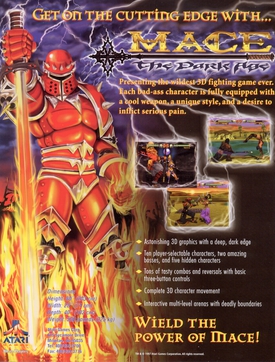
Mace: The Dark Age is a fighting video game released by Atari Games for arcade machines in 1997 and later ported by Midway to the Nintendo 64. Like many fighting games of the time, its style is marked by extreme violence, with characters graphically slaying defeated opponents. Utilizing 3Dfx Voodoo chips for the hardware, the game received attention for its cutting-edge graphics and turned Atari a profit in the arcades. Critical response to the gameplay was much less enthusiastic.
XBAND was one of the first competitive online console gaming networks and was available for the Genesis and Super NES. It was produced by Catapult Entertainment in Cupertino, California. It is the only modem released in America to have been officially licensed by Nintendo. It debuted in various areas of the United States in late 1994 and 1995.

WWF WrestleMania is a professional wrestling arcade game released by Midway Manufacturing Co. in 1995. It is based on the World Wrestling Federation (WWF) professional wrestling promotion.
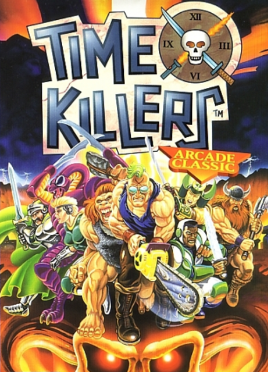
Time Killers is a 1992 weapon-based fighting arcade game developed by Incredible Technologies and published by Strata. Along with Allumer's Blandia, Time Killers is one of the earliest weapon-based fighting games modeled after Capcom's Street Fighter II (1991). It was later overshadowed by the success of SNK's 1993 weapon-based fighting game, Samurai Shodown. In Time Killers, eight warriors from different periods in history face off with each other, and then Death, for a chance at immortality.
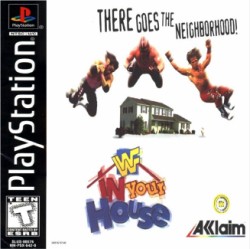
WWF In Your House is a video game for the PlayStation, Sega Saturn, and DOS. Developed by Sculptured Software, it is a follow-up to WWF WrestleMania: The Arcade Game and was published by Acclaim Entertainment, who had previously released WrestleMania for home consoles.
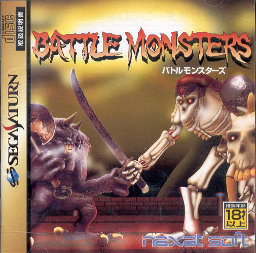
Battle Monsters (バトルモンスターズ) is a versus fighting game developed by Scarab for the Sega Saturn. It was originally published by Naxat Soft in Japan and later published in North America and Europe by Acclaim Entertainment. Similar to Atari's Pit-Fighter, the game makes heavy use of digitized human actors as the characters, plus some blood influenced by Midway's Mortal Kombat series. The game features 12 playable fighters, and plays out on multi-tiered stages.

Mortal Kombat is an arcade fighting game developed and released by Midway in 1992. It is the first entry in the Mortal Kombat series and subsequently was released by Acclaim Entertainment for nearly every home platform of the time. The game focuses on several characters of various intentions who enter a martial arts tournament with worldly consequences. It introduced many key aspects of the Mortal Kombat series, including the unique five-button control scheme and gory finishing moves called Fatalities.
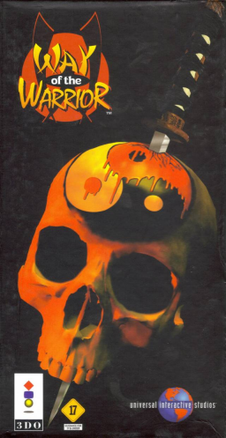
Way of the Warrior is a fighting game developed by Naughty Dog and published by Universal Interactive Studios for the 3DO. It was released in North America on August 30, 1994.

A haptic suit is a wearable device that provides haptic feedback to the body.

Shadow: War of Succession is a 1994 fighting video game developed and published by Tribeca Digital Studios for the 3DO Interactive Multiplayer.















